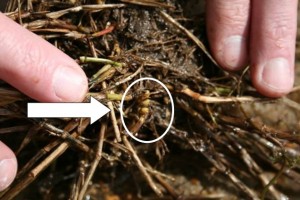As fall sets in, and our plants start to look tired, we
gardeners go into clean-up mode. First,
we clean out our vegetable gardens, putting plants with diseases and insects
into the trash or burn pile and clean plants into the compost bin. Then, we may start to rake up a bit. The combination of cooler weather and
sunshine just invites us to spend the rest of the day outside and so we start
to look around for other tasks. Often we
go get the pruners and do a little trimming.
But is fall the best time to do that?
I argue that it is not. In the
fall your plants are about to go into dormancy, and pruning them can stimulate
a flush of new growth at the wrong time.
This depletes the plants’ reserves of energy for the spring flush, and
leaves open wounds at a time when frost is quickly approaching.
Additionally, many people give their crape myrtles a severe
pruning in the fall after this summer’s blooms have faded. They usually do this for one of two reasons,
either to ensure lots of blooms for next summer or to tame a tree that has
outgrown its space. While it is true
that crape myrtles bloom on new growth, you do not have to prune in order to
get blooms the next year. The plant will
put on new growth all by itself in the spring, and flowers will initiate from
that growth. If you have a crape that
has grown to the point where its limbs whack you in the face when you mow
around it or walk next to it, prune judiciously. Try just taking off the offending limbs on
the underside of the canopy and allowing the tree to grow up and over that
sidewalk. Still, this type of pruning
should wait. Crape myrtles have a beautiful growth habit or shape when left to
look natural. Even the dried seed pods
left on them in the winter add some ornamentation to a bleak landscape.
So, when should we prune?
I recommend late winter and early spring. In late winter many of the plants will be
dormant and you will be better able to see the branching structure. In spring, the plants will be actively
growing and can recover quickly from pruning.
For early spring bloomers, such as azaleas, it is best to prune them
immediately after they are finished with their flowers. To get more information on pruning or any
other horticulture question you may have, give me a call at the Extension
office, 901-465-5233. UT Extension
offers its programs to all eligible persons regardless of race, color, national
origin, sex, age, religion, disability or veteran status and is an Equal
Opportunity employer.
























.JPG)




